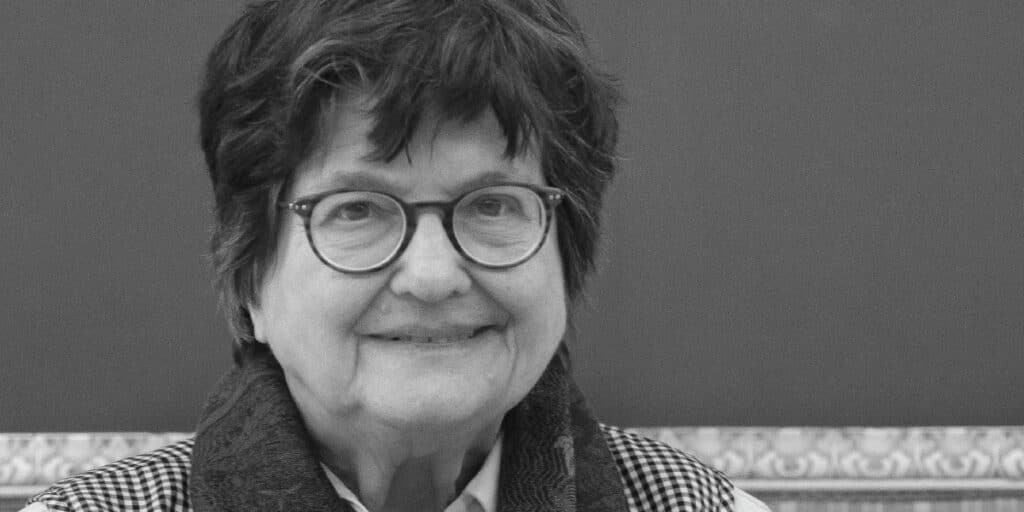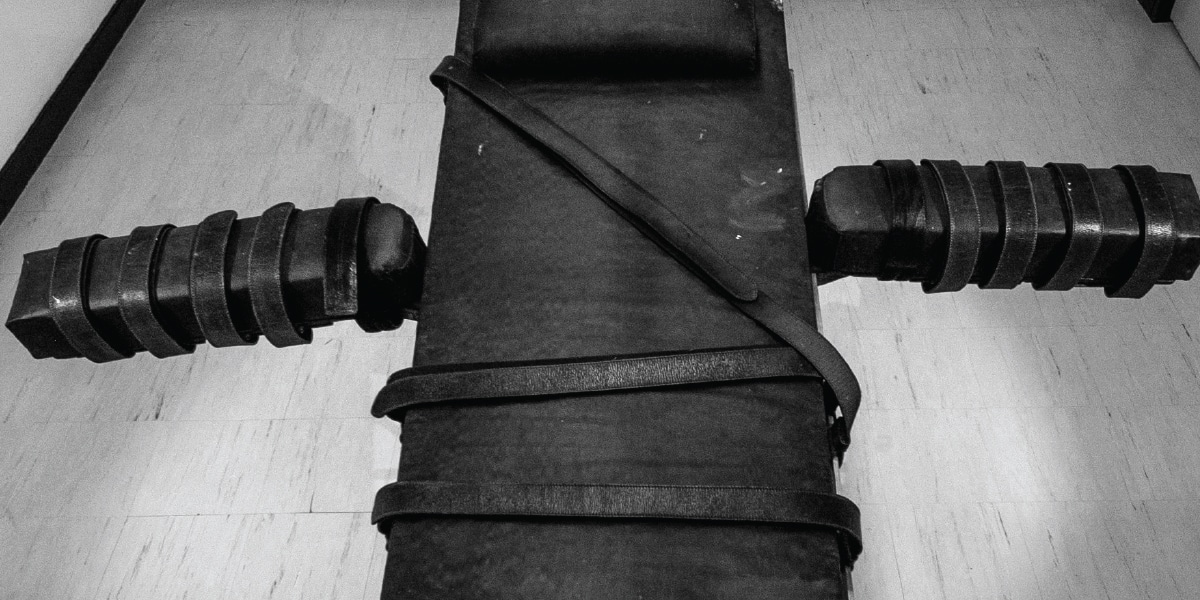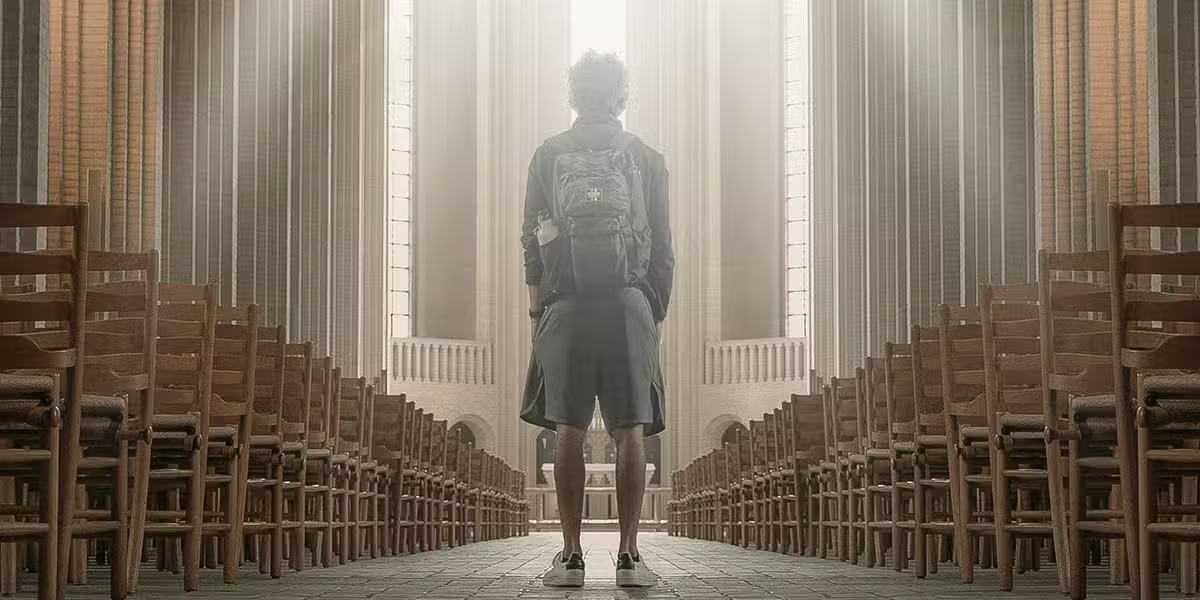“Grace comes and wakes us up,” says Sister Helen Prejean, who has dedicated her life to fighting capital punishment in the United States. “It’s what you do with it when it comes that counts.”
“We’ve never even heard of Sister Helen Prejean,” my university students complained when they were assigned this religious sister as a presentation project. Their assignment: Research her death penalty ministry, exploring how she fought an injustice to promote the common good.
The first resource to consult, I advised, would be the 1995 movie Dead Man Walking, which closely follows her 1993 book; the 2013 edition adds the subtitle The Eyewitness Account of the Death Penalty That Sparked a National Debate. The reissue celebrated the 20th anniversary of the book, which now has sold over 800,000 copies. To mark the 30th anniversary of the film, St. Anthony Messenger sat down with Sister Helen for an interview to remember the beginnings of her work with death row inmates and the publication and surprising bestseller status of her book and a highly acclaimed movie.
One thing you have to know about Sister Helen is that, despite her international celebrity, she rejects any trappings of fame. For our interview, she sat in her office at home in the St. Thomas Project in New Orleans, in a neighborhood of low-income and joyful people. She described herself as “a Deep South gal born in Baton Rouge, who grew up in the Jim Crow South.”
She had “a fantastic childhood, living in a big white house and had domestic help who were Black and lived in the servants’ house.” Only after years inside the bubble of religious life did she realize she knew no African Americans and had never interacted with poor people.
At points in our lives, she reflected: “Grace comes and wakes us up. It’s what you do with it when it comes that counts.”
Annunciation Moments
Another thing that it helps to know about Sister Helen is that underlying her Southern accent and her contagious laugh is a deep spirituality. Above her desk are two religious symbols she reflects on regularly: a crucifix to remind her of the centrality of “the suffering Christ” in her life and a print of Fra Angelico’s Annunciation. Sister Helen is always open to “annunciations” in her life, sharing a favorite quote by St. Basil: “Annunciations are frequent; incarnations are rare.”
When she was a girl, Sister Helen loved the story of the angel Gabriel appearing to Mary, announcing: “You have found favor with God. And now, you will conceive in your womb and bear a son, and you will name him Jesus.”
“I’d say yes, too, if an angel appeared to me,” she remembers thinking. Her “annunciation moments” are always preceded by prayer and discernment to understand what God is calling her to. “I was called to move to where poor people were struggling,” she says. “Then I was invited to write to a man on death row. As I was answering those calls, I remember feeling I had fallen down a laundry chute.”
Accepting an invitation to write to a death row inmate in a Louisiana prison took Sister Helen into uncharted territory. She had never been to a prison, much less a death row unit. The book and the movie let us in on the discomfort she feels as she meets the convicted murderer, Patrick Sonnier, in 1984.
“On entering the prison the first time, the chaplain says that ‘these people’ are ‘the scum of the earth’ and I must be very, very careful because they are all con men and will try to take advantage of me in every way they can,” she writes in Dead Man Walking.
The book recounts her conversations with Sonnier and her attempts to convince him to assume responsibility for the crime he and another man committed: the rape and murder of a young couple in a lonely wood.
A Moral Imperative to Share
Writing letters, visiting Sonnier, and praying with him led her to accept his plea to become his “spiritual adviser,” the last person to see him before he was led down the hall to his death by lethal injection.
“After watching him be executed, I went outside and threw up in the dark,” she tells me.
The emotional and physical trauma did not stop Sister Helen from accepting the next call she received. “I felt a moral imperative from witnessing something like what I had seen, so I began speaking to groups in public, whoever would listen.”
She wanted to write about her experience but didn’t know where to submit her first writing. She decided to send it to the now-defunct Pacific News Service; its home page describes the news service as “a 25-year-old network of writers, scholars, eccentrics, and young people.” It published her two profiles, “one of the killer and one of the victim.”
“I had never written a book and had no confidence, but [I] just wanted to publish this story,” Sister Helen says. She began writing more extensively about her experience with death row inmates. At a friend’s suggestion, she sent her writing to an influential New York book agent. Upon reading Sister Helen’s manuscript, the agent walked down the street and handed it to an editor at Random House. “You might be interested in this book,” the agent said. The editor recognized its potential as “a cutting-edge book, a personal narrative about the death penalty.” He predicted “it would be to the death penalty what Rachel Carson’s Silent Spring did for the environment,” Sister Helen tells me.
That editor was right. After a massive media blitz by Random House, the book made the bestseller list of The New York Times, settling in for eight months. “We didn’t initiate an opportunity to turn the book into a film, but we waited for an invitation,” says Sister Helen. The next “annunciation moment” was soon to arrive.
By 1994, the book was popular enough to be in paperback. “While actress Susan Sarandon was on set filming The Client [an adaptation of John Grisham’s book], a friend handed her a copy of my book, warning her not to start reading it that night because it was ‘too dark,’” Sister Helen tells me. “She stayed up all night reading it.”
Sister Helen calls Sarandon “the midwife” of the film; “without Susan, it would never have happened.” Unexpectedly (or not, if you’re into annunciation moments), Sarandon was filming a scene from The Client at the New Orleans airport. She called Sister Helen to see if they could meet for lunch. After that meal, Sarandon went home and urged her then-partner, Tim Robbins, a well-known actor and director, to write a script for a movie.
A Balancing Act
It took nine months of Sarandon’s urging, and even tears, to get Robbins on board. He recognized this would be different from other crime and execution movies. “Those movies never descended into the moral dilemma of the death penalty,” Sister Helen says.
“Tim knew he wanted the film to be art, not propaganda,” she says. “He showed both sides of the story, the convicted man and the victims (through their parents). . . . When the movie came out, Tim heard from victims’ parents that he had gotten it right. He treasured that feedback.”
The movie received overwhelmingly positive reviews when it premiered in December 1995. In a January 1996 review, critic Roger Ebert noted: “This film ennobles filmmaking. . . . Sister Helen [in the movie] is one of the few truly spiritual characters I have seen in the movies.
“Movies about ‘religion’ are often only that—movies about secular organizations that deal in spirituality. It is so rare to find a movie character who truly does try to live according to the teachings of Jesus. . . . This character will behave according to what she thinks is right, not according to the needs of a plot.”
Since that review is 30 years old, I went in search of a current assessment and found it a few doors down the hall from my office at Mount St. Joseph University: Drew Shannon, PhD, is a self-proclaimed “huge movie buff and closeted film critic” who has seen and owns thousands of movies. After he heard Sister Helen speak at our two commencement ceremonies in May, he rewatched the film.
He remembers seeing it in a theater in 1996, thinking then how good the performances were. He was once again touched by the “stellar performance of Susan Sarandon as Sister Helen. It’s the simplicity of her performance. She wears no makeup and is humble in every way,” he says. “She is able to perform as Sister Helen, both sure and doubtful at the same time.”
He praises Robbins as “very accomplished at walking a tightrope of telling Helen’s story while taking into account the victims. Sarandon and Robbins could have made a preachy left-wing movie, given their own politics, but it’s surprisingly balanced.”
The movie, calculatedly released just in time to be nominated for the 1996 Academy Awards, earned four nominations: Best Actor in a Leading Role (Sean Penn); Best Director (Robbins); Best Music, Original Song (Bruce Springsteen); and Best Actress in a Leading Role (Sarandon). Only Sarandon won an Oscar.
Shannon praises Penn as the death row inmate Matthew Poncelet (the movie conflates two murderers Sister Helen writes about in the book). “Penn plays the role with such pathos, such humanity that we want to despise him but can’t,” he says. “In the film, he’s a tough guy, but vulnerable and beautiful when he opens up to Helen.”
Declining Execution Rates
It’s hard to make a direct correlation between Dead Man Walking and changes in capital punishment rates, but the Death Penalty Information Center (DPIC) reports executions have been steadily declining in the United States, from a 1996 high of over 300 executions to under 50 in 2018.
The public’s acceptance of the use of the death penalty also shows continued downward trends. For the first time since 2000, an October 2023 Gallup Poll asked respondents about the fairness of the death penalty, finding that more people (50 percent) believe the death penalty is not applied fairly, compared to 47 percent who think it is.
“We have made great strides,” says Sister Helen. “Patterns are becoming clearer. In the past, juries were not given the option of sentencing felons to life without parole instead of to death. A Gallup Poll makes clear that a majority of Americans, given this option, would choose a sentence of life without parole.”
She decries recent Supreme Court rulings that she believes indicate a majority of the justices “do not accept that killing people by using the death penalty is cruelty,” judgments that leave it to the states to decide about appeals to deny execution. She says most of the executions happen in pockets of former slave states. The DPIC reports these figures by region since 1976: South, 1,303; Midwest, 201; West, 90; Northeast, 4; and Texas alone, 589.
A Pro-Life Issue
Sister Helen has worked for years to get the Catholic Church to frame use of the death penalty as a pro-life issue. Her dialogue with Pope John Paul II paved the way. When communicating with the pope, she told him that when he “meets people who call themselves pro-life, they are pro innocent life.” She rejects that equivalency. “He told me in 1999 that he was thinking about it.”
In a well-publicized statement in 1999 at a Mass in St. Louis, Pope John Paul II said in his homily: “A sign of hope is the increasing recognition that the dignity of human life must never be taken away, even in the case of someone who has done great evil.
“Modern society has the means of protecting itself, without definitively denying criminals the chance to reform. I renew the appeal I made most recently at Christmas for a consensus to end the death penalty, which is both cruel and unnecessary.”
Sister Helen was hopeful about his changing attitude; she continued her efforts with Pope Francis. After several meetings with him, Sister Helen was thrilled that the Church changed its official teaching on the death penalty.
In May 2018, Pope Francis announced this change to Article 2267 of the Catechism of the Catholic Church: “Consequently, the Church teaches, in the light of the Gospel, that ‘the death penalty is inadmissible because it is an attack on the inviolability and dignity of the person,’ and she works with determination for its abolition worldwide.”

“That change finally happened after 1,500 years of dialogue,” Sister Helen says, adding that she has adopted French theologian Teilhard de Chardin’s wisdom, “Above all, trust in the slow work of God.”
Her several books and the movie have enriched readers and viewers and have spun off other projects that keep pushing her message about the death penalty into the headlines. In 2000, an opera of Dead Man Walking, by composer Jake Heggie and librettist Terrence McNally, premiered in San Francisco and has been performed internationally.
Another work still in progress is a graphic adaptation of Dead Man Walking. A longtime collaborator of Sister Helen’s, Rose Vines, is writing the text. The book, due out this fall, is being illustrated by Catherine Anyango Grünewald.
Sister Helen remains committed to doing whatever she can to keep the eradication of the death penalty before the public. But she is 85. Near the end of our conversation, I ask, “Are you consciously limiting travel and public appearances as you accept the limitations we all face as we age?”
“I am carefully discerning my priorities,” she answers reflectively.
‘What Are You Calling Me To Now?’
She is collaborating on a book about Manuel Ortiz with Thomas L. Dybdahl, author of When Innocence Is Not Enough: Hidden Evidence and the Failed Promise of the Brady Law. After Ortiz immigrated here from El Salvador, days before he could become a naturalized citizen, he was arrested and accused of a murder for hire of his wife, Sister Helen explains.
She visits Ortiz on death row and is motivated by his appeal to her, “Sister Helen, I just want the truth to come out about my life.” She is grateful that she’s got a major dose of zest. “I get energy back when doing what I am called to do,” says Sister Helen.
Prayer and the spiritual life feed her. “It’s the source of all I do,” she says. Reviewing journals she has kept over the years, she notices a recurring theme: “What are you calling me to now?” At the end of our time together, she assures me she’ll stay energized and engaged, reinforcing her motto: “Live life to the full.”
On a closing note, she adds with a twinkle in her eye, “It helps to be Cajun too!”









4 thoughts on “‘Dead Man Walking’ at 30: The Fight Continues ”
I feel that Sister Helen has and is influencing many in her thinkings of the death penalty. Being a Retreatant of the House of Manresa, I will as my brother retreatants to prey for those on death row and others incarsarated!
A person‘s life should be in no other hands, but God’s!!!!!!!!!!!!!!!!!!!!!!!!!!!!!!!!!!
I applaud Sister Helen.
Her “Yes” to our Lord
Her determination and continued focus to her call, (also our Lords gift)
And am grateful to the “yes” of each person who stood behind her for this cause.
I admire Sister Helen’s moral courage in defending the dignity of all human beings. God don’t make junk!